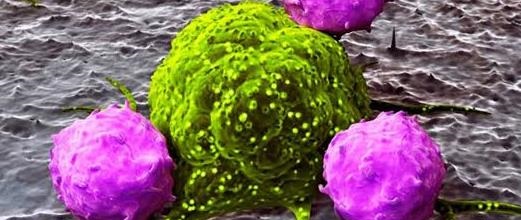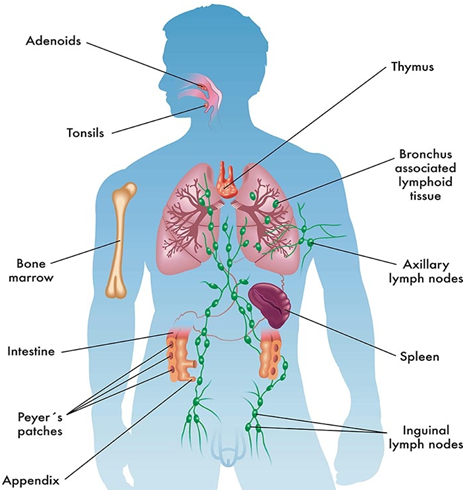Innate immunity is the body’s natural inborn resistance to infection and it is quick in responding to invasive microbes. It is a component of the immune system that is an inherited protective mechanism, and which protect the body of an animals from many kinds of pathogens. Innate immunity is a nonspecific immune response to antigens, and it is the first line of defense that is not acquired through prior contact with an infectious disease or pathogen.
This form of immunity is not directed at any specific organism or antigen, instead they are intended for all pathogens or foreign substances to which the body is exposed. The response of the innate immune system to pathogen is static (i.e. it does not improve with repeated exposure to antigens and there is no immunological memory on subsequent exposures), and subsequent exposure of the body to antigens does not change or increase the level of response of this type of immunity.
Innate immunity is comprised of four (4) types of defensive barriers which help to keep away pathogenic microorganisms from the host body, and these are:
- Anatomic barriers such as the skin, epithelium, gastrointestinal tract (GIT), mucous membrane, mammary gland (breast), respiratory tract, and urinogenital tract.
- Physiologic barriers such as body temperature, pH level, chemical mediators (e.g. cytokines, lysozyme, antimicrobial peptides, interleukins, surfactants, lipids, enzymes, interferon, and complements).
- Phagocytic barriers which include special forms of the white blood cells (e.g. monocytes, neutrophils, and eosinophils) which internalize/engulf and digest or breakdown foreign substances including whole microorganisms that enter the body.
- An inflammatory barrier which occurs following tissue damage and it is usually characterized by redness, swelling (oedema), pain and heat. In this type of innate immunity, vascular fluids containing protective serum proteins and phagocytic cells are released to the site of infection to stop the spread of the infection.
- Intact normal microflora: Normal microflora are populations of microorganisms (normally bacteria and fungi) which inhabit the internal and external body of healthy individuals. They are either resident or transient on the body, and they play a major role in protecting the body from foreign substances by antagonizing the colonization of body surfaces by pathogenic microorganisms.
Normal microflora play a major role of microbial antagonism, and when they are not present or disturbed, pathogens colonize, proliferate and cause disease. The human body is in constant association with microorganisms (both beneficial and harmful organisms), and it is the job of microflora to ensure that harmful organisms do not colonize it. Normal microflora also outcompete microbes for essential nutrients in the body.
In healthy individuals, most of the microorganisms encountered by the body of a human host are readily cleared and eliminated by the mechanisms of the innate (nonspecific) immune system even before they activate the adaptive immune response to the invading foreign substance. Innate immune response is very vital as the first line of defense against an infection because it provide the very primary defense during the critical stage of infection (i.e. at the onset of host exposure to an antigen) since the adaptive (specific) immune response takes some time to come up.
However, there are some hosts factors that can affect and cause variations in the response of innate immunity based on individual differences such as: age, sex, nutrition, host genetic determinants, stress, hormonal activity, and fatigue. Some diseases or infections that occur in humans are sex-specific. Malnutrition also predisposes the body to infection because undernourishment affects the immune system and weakens its ability to protect the body from foreign substances or immunogens.
Newborns and the elderly are more prone to some infections due to the low level of their immune system which is either still developing (as in infants) or is in a declining stage (as in old people). Stress, fatigue, hormonal imbalance and the genetic makeup of individuals are other predisposing factors that may affect the level of response of the immune system of a human host due to differences in their physiological and environmental conditions.
MECHANISMS OF INNATE IMMUNITY
- The skin: The skin is an intact, tough and impermeable barrier that covers the human body and protects it from microbial invasion. When the integrity of the intact skin is breached or cut open as a result of burns, needle prick, insect bite, abrasions or wounds, the skin becomes access way via which infectious agents enters the body. The skin has a low pH, and in addition to this, it also secretes some antimicrobial substances such as fatty acids and lactic acids in sweats which help to keep pathogenic microorganisms at bay.
The dry nature of the skin coupled with the dense population of resident microflora on it help to keep foreign substances and microbes in check or under control. The mechanical barrier of the intact skin, the presence of lysozyme (enzyme that dissolves the cell walls of some bacterial) and the acidic nature (pH 3-5) of the skin help to impede the growth of microbes.
- Mucous membrane: Mucous membranes are largely found in the nose, mouth, gastrointestinal tract (GIT), cervicovaginal tract, urinogenital tract and the respiratory tract where their main function is to trap pathogenic microorganisms and other foreign substances that tries to enter the body via any of these routes. Mucous is a biological secretion produced by membranes that line the inner surfaces of the body. They contain substances or compounds that are either bactericidal or bacteriostatic to invasive microbes. Lysozyme is a typical example of an antimicrobial compound secreted in mucus. Microbial attachment to epithelial surfaces of the body is usually the first stage towards the development of an infection.
Thus, mucous secretions containing secretory antibodies help to prevent this microbial attachment from taking place. Invasive microbes trapped by mucous secretions of the body are removed by reflex actions such as sneezing, coughing and cilliary movements of the respiratory tract which drives microbes upwards and outwards. The flushing mechanisms of the urine, tears and saliva also help to trap and remove microbes from the urinogenital tract, eyes and the mouth respectively.
In the vagina of adult females, the mucous from the vaginal wall contains normal flora (e.g. lactobacillus) which maintains acidic pH that prevent the colonization of pathogenic microorganisms in that part of the body. Also in the GIT, a low pH and anaerobic environment is maintained by the resident normal flora in order to inhibit and prevent colonization by microbes.
- Inflammation: Inflammation is the general response of the body to microbial invasion or tissue injury (e.g. wound). It is a complex series of immunological response (comprising of both the humoral and cellular immunity) that usually involves the accumulation of immune system cells and fluids around damaged body tissues or injuries. Microbial invasion elicits inflammatory response by causing the leakage of phagocytes and vascular fluids that contain serum proteins with antibacterial activity into the affected body area.
This response helps to defend the body against infection and possible tissue damage. Cytokines and interferons (IFNs) are some of the chemical mediators released during an inflammatory response. The inflammatory response that occurs during microbial invasion or tissue damage is strong enough to prevent the spread of microbes including viruses, bacteria, and fungi from their portal of entry to other body sites.
- Phagocytic action: Phagocytic action is mediated by special types of cells known as phagocytes which swim into action following microbial invasion of the body. Phagocytes are recruited in large numbers and they travel to the site of inflammation and move around in the blood circulation to eat up or engulf microbial cells and antigens. The process by which phagocytes ingest extracellular particulate materials (i.e. microbes and foreign bodies) is known as phagocytosis. Phagocytosis is an important innate defense mechanism that is carried out by a variety of cells collectively called phagocytes. The main functions of these cells are to ingest, kill and digest whole microorganisms.
- Cytokines: Cytokines are low-molecular weight molecules of the innate immune system which are released by leukocytes to help in the regulation of inflammatory response during microbial invasion. They are chemical mediators which play specific augmenting and regulatory roles in innate defense mechanism. Some examples of cytokines include interferons (IFNs), interleukins (ILs), and tumour necrosis factor (TNF). Cytokines also provide innate immunity against viruses and tumour cells in host cells.
- Complements: Complements are a series of serum proteins that play significant role in innate defense mechanism by catalyzing the killing of bacterial cells and also facilitating the migration of white blood cells to sites of inflammation or infection in the body. This group of independent serum proteins which works as a system and in cascade is generally known as “complements” because they balance or assist the antibody response of the immune system in the face of microbial invasion.
Complements are heat-labile glycoproteins found in blood plasma and serum, and they help bacterial opsonization by antibodies. Specifically, complements consist of nine (9) numbered components (i.e. C1 – C9) in humans; and these are enzymatically activated through a series of pathways that make up the complement system. These numbered components of the complement are the individual proteins that make up the complements, and as earlier said, each is assigned a number from 1 – 9 to read C1, C2, C3, C4 and so on till C9.
Each of these individual proteins of the complement system plays specific roles in both the innate and adaptive immune response. Complements are usually designated with the letter ‘C’, and this is usually followed by a number which designates the type. They are also present in tissue fluids and plasma; and complements are also known to help improve or augment the mechanism of the adaptive immune response since they are activated via antigen-antibody reaction. Complements play significant role in defending the host against infection and pathogen invasion in that they help to mediate phagocytosis, bacterial lysis, opsonization and inflammation.
- Mammary glands: The mammary gland (i.e. the breast in females) is an anatomical structure that provides a non-immunologically surface protective mechanism in humans. The flushing action of the milk that emanates from the breast helps to prevent the invasion of foreign bodies and microbes. Also, the milk contains some antimicrobial agents or molecules (e.g. lysozymes) that lyse bacterial cells. In addition, the first milk from the mammary gland (known as colostrum) helps to initiate some level of immunity in newborns.
REFERENCES
Abbas A.K, Lichtman A.H and Pillai S (2010). Cellular and Molecular Immunology. Sixth edition. Saunders Elsevier Inc, USA.
Actor J (2014). Introductory Immunology. First edition. Academic Press, USA.
Alberts B, Bray D, Johnson A, Lewis J, Raff M, Roberts K and Walter P (1998). Essential Cell Biology: An Introduction to the Molecular Biology of the Cell. Third edition. Garland Publishing Inc., New York.
Bach F and Sachs D (1987). Transplantation immunology. N. Engl. J. Med. 317(8):402-409.
Barrett J.T (1998). Microbiology and Immunology Concepts. Philadelphia, PA: Lippincott-Raven Publishers. USA.
Jaypal V (2007). Fundamentals of Medical Immunology. First edition. Jaypee Brothers Medical Publishers (P) Ltd, New Delhi, India.
John T.J and Samuel R (2000). Herd Immunity and Herd Effect: New Insights and Definitions. European Journal of Epidemiology, 16:601-606.
Levinson W (2010). Review of Medical Microbiology and Immunology. Twelfth edition. The McGraw-Hill Companies, USA.
Roitt I, Brostoff J and Male D (2001). Immunology. Sixth edition. Harcourt Publishers Limited, Spain.
Zon LI (1995). Developmental biology of hematopoiesis. Blood, 86(8): 2876–91.
Discover more from #1 Microbiology Resource Hub
Subscribe to get the latest posts to your email.



